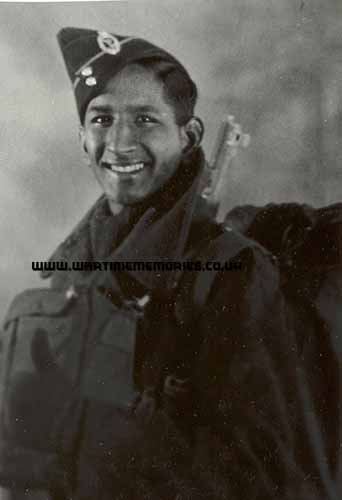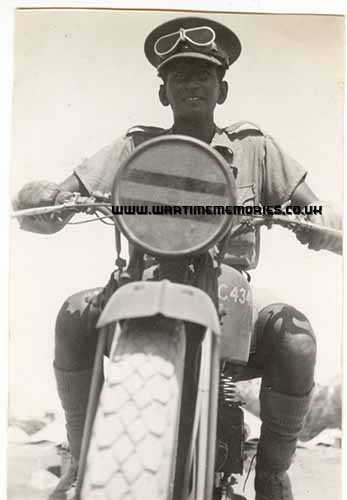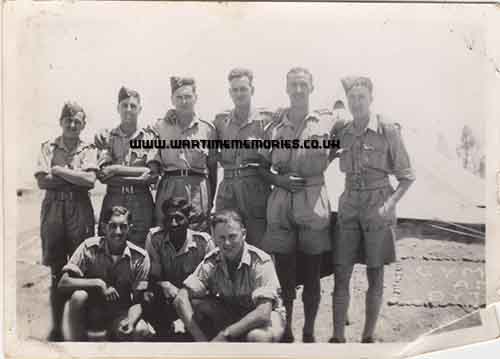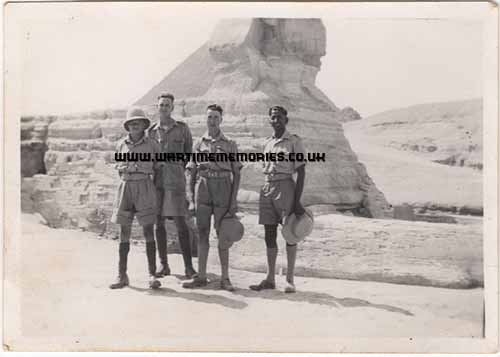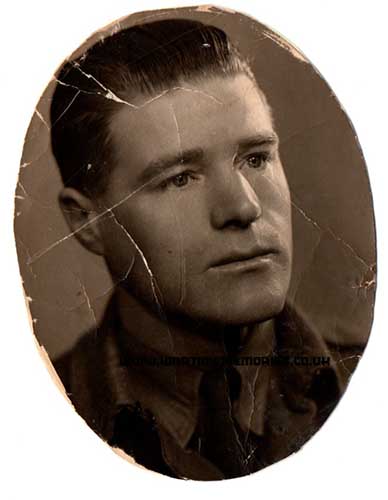|
|
|
RAF Catterick
Catterick was a 1st World War Royal Flying Corps Airfield and was one of first
military airfields in the world opening in 1914. Training pilots and assisting in the defence of North East England. On formation of the Royal Air Force on 1st April 1918 it became RAF Catterick and 49 Training Depot Station.
RAF Catterick was largely rebuilt in 1935 under the expansion programme with many of the 1920's buildings being cleared away (except the original watch office which still stands). Most of the buildings there today date from this period.
In September 1939 Catterick became a Fighter Sector Station in 13 Group Fighter Command.
609 "White Rose" Squadron, was one of the 9 squadrons of the RAF equipped to fly the famous Spitfire at the out break of war in September 1939. The runway at Catterick was so close to the A1 that traffic had to be stopped to allow Spitfires to take off.
During WW2 there were decoy sites protecting this airfield at Low Moor and Birkby
The Sector Ops. Block was replaced in 1943 with a protected operations block identical to those built at other Fighter Sector Airfields.
Until recently Catterick was the headquarters of the RAF Regiment and served as the RAF Fire Service Training School. It is now an Army establishment and the runway is used only for gliding.
Squadrons based at Catterick during the Second World War:
- No. 27 Squadron formed at Catterick on 11th Oct 1927, departed 8th Oct 1939.
- No. 219 Squadron. 4th Oct 1939 to 12 Oct 1940 & 25 Apr 1943 14 May 1945
- No. 609 Squadron from Sept 1939.
- No. 17 Squadron 31st Aug 1941 to November 1941.
8th Oct 1939 Move
18th Oct 1939 Bad loading causes fatal accident
April 1940 Re-equipped with Spitfires
28th April 1940 Change of Duty
28th May 1940 Patrols
1st June 1940 Temporary attachment
5th June 1940 Killed in flying accident
28th July 1940 Move
9th Aug 1940 Defence
15th Aug 1940 Eagle Day
3rd Sept 1940 In Action
3rd September 1940 Battle of Britain
7th January 1941 New night-fighter Squadron formed
A new No. 68 Squadron was formed at Catterick on 7th January 1941 as a night-fighter Squadron equipped with the Blenheim 1f. The Blenheims carried airborne interception radar, known as A.I. Most of the the pilots were from single-engine fighter squadrons and needed to go through a twin-engine
conversion course. The first A.I. operators were mostly ex-gunners who were trained on the equipment by the Squadron mainly by the ground 'boffins'. At this time there were no operational training units for night-fighter crews, and no A.I. training school for operators (until No.3 Radio School was opened at Prestwick in July 1941). Consequently the initial training period for 68 Squadron was lengthy and it did not become operational until 7 April 1941.
7th January 1941 New night-fighter Squadron formed
23rd February 1941 Move
23rd April 1941 Operational
12th May 1941 Hampden Lost
30th June 1941 New Spitfire Squadron formed
28th July 1941 On the Move
28th July 1941 Move for new role
August 1941 Training
10th August 1941 Escaped fire
31st August 1941 Preparation for overseas service
31st August 1941 Move south
6th October 1941 Relocation
19th October 1941 Engine failed
28th October 1941 Crashed in fog
4th November 1941 Crash in training
7th December 1941 Returned from Russia and re-equipped
6th January 1942 Spitfire lost off Rathlin Island
15th February 1942 Departure for the Middle East
16th July 1942 Relocated
20th November 1942 On the Move
18th September 1943 Shortage of experienced pilots
10th November 1943 Relocated
If you can provide any additional information, please add it here.
|
Those known to have served at RAF Catterick during the Second World War 1939-1945. The names on this list have been submitted by relatives, friends, neighbours and others who wish to remember them, if you have any names to add or any recollections or photos of those listed,
please
Add a Name to this List
|
|
|
The Wartime Memories Project is the original WW1 and WW2 commemoration website.
Announcements
- The Wartime Memories Project has been running for 24 years. If you would like to support us, a donation, no matter how small, would be much appreciated, annually we need to raise enough funds to pay for our web hosting and admin or this site will vanish from the web.
- 10th April 2024 - Please note we currently have a huge backlog of submitted material, our volunteers are working through this as quickly as possible and all names, stories and photos will be added to the site. If you have already submitted a story to the site and your UID reference number is higher than 263893 your information is still in the queue, please do not resubmit, we are working through them as quickly as possible.
- Looking for help with Family History Research?
Please read our Family History FAQ's
- The free to access section of The Wartime Memories Project website is run by volunteers and funded by donations from our visitors. If the information here has been helpful or you have enjoyed reaching the stories please conside making a donation, no matter how small, would be much appreciated, annually we need to raise enough funds to pay for our web hosting or this site will vanish from the web.
If you enjoy this site
please consider making a donation.
Want to find out more about your relative's service? Want to know what life was like during the War? Our
Library contains an ever growing number diary entries, personal letters and other documents, most transcribed into plain text. |
|
We are now on Facebook. Like this page to receive our updates.
If you have a general question please post it on our Facebook page.
Wanted: Digital copies of Group photographs, Scrapbooks, Autograph books, photo albums, newspaper clippings, letters, postcards and ephemera relating to WW2. We would like to obtain digital copies of any documents or photographs relating to WW2 you may have at home. If you have any unwanted
photographs, documents or items from the First or Second World War, please do not destroy them.
The Wartime Memories Project will give them a good home and ensure that they are used for educational purposes. Please get in touch for the postal address, do not sent them to our PO Box as packages are not accepted.
World War 1 One ww1 wwII second 1939 1945 battalion
Did you know? We also have a section on The Great War. and a
Timecapsule to preserve stories from other conflicts for future generations.
|
|
Want to know more about RAF Catterick? There are:34 items tagged RAF Catterick available in our Library There are:34 items tagged RAF Catterick available in our Library 
These include information on officers, regimental histories, letters, diary entries, personal accounts and information about actions during the Second World War. |
|
Chief Fire Officer Dennis Healy "Blacky" Blackshaw I had a grandad,who passed away 10 years ago, who was based at Catterick during 1946, I think thats what he told me.
He was chief fire officer, nickname Blacky. I`m his grandson who misses him everyday. I used to hear his stories about the RAF & just wondered if there`s anyone out there who knew him or got any pics that I could have. Please, I miss him so much. His name was Dennis Blackshaw, lived near Cromer in Norfolk. He had three daughters, Mags, Dianne, Christine & his wife was Ruby.
|
PO Geoffrey Robert Butcher 68 Squadron (d.18th May 1941) My Great-Uncle, Geoff Butcher, was a Pilot Officer with 68 Squadron during WW2.
Before the war he won a scholarship to Brasenose College, Oxford; after the outbreak of war he was transferred to Christ Church, Oxford. In July 1940 he volunteered for the RAF, a year before finishing his studies.
After training he became a Sergeant Pilot, and at the beginning of 1941 he got his commission as a Pilot Officer.
The squadron was based at Catterick during training as a night-fighter squadron. The 1st CO was Spn Ldr DL Clackson, but later replaced by Wg. Cdr Max Aitken, DFC.
In April 1941, 68 squadron was made operational and moved to High Ercall Airfield, Staffs. The first casualties occured when Geoff and Sgt. Irwin Harold Wiskar (Czech) were killed on the night of the 17/18 May 1941. They were engaged in local night flying practice in their Bristol Blenheim L8675 when the aircraft stalled at low altitude.
Six of their squadron brothers acted as pall-bearers at their funeral.
Geoff is buried at Wombridge Church Yard.
|
John Shipman 41 Squadron My father, John Shipman, flew Spitfires from Catterick in 41 Squadron. His personal recollections are recorded in his book "One of the Few"
|
Stan Yates Sqdn 2816 RAF Catterick I served in Sqdn 2816 at Catterick Camp in 1940. Does anyone remember an explosion there at the railway station round that time?
|
Mjr. Frederick Gordon Smith MID. Royal Signals We lived in Catterick Army Camp in Yorkshire. Waltzing their tanks down the road. An auster landed in the field opposite where Italian prisoners of war played football. Winter 1943 we were snowed up in a hotel on the moors and my father Major Frederick Smith who was adjutant of the Royal Signals got two tanks to go out and rescue him!!
|
John Leslie Harris Royal Corp of Signals 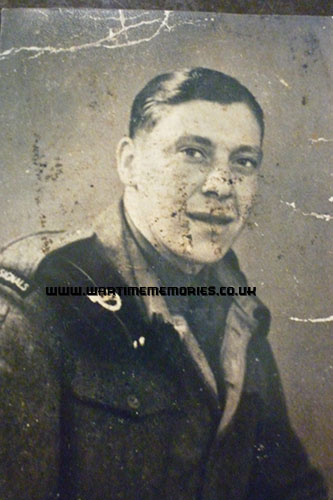    My now deceased father, John Harris, dictated his memoirs to me in 2004 and which I have made into a booklet for my family. This memoir is titled Diary of a 'D Day' Soldier.
This memoir states that following regular training when he was conscripted in to the British Army on the 12th February 1942, he and a small number of selected soldiers travelled to Hevant to undertake an Advanced Training Course. This was situated near Arundel Castle in Sussex.
At the completion of this training he travelled by train from Sussex to Catterick.
On the 7th July 1942 he joined The Royal Corps of Signals and completed full training as a Despatch Rider, which lasted about 12 weeks.
My father, at the completion of this training then journeyed to Stockton in Yorkshire where he and other soldiers lived under canvas, until October 1942.
His next journey was north to Glasgow, boarding ship for overseas duty. This ship in non war time, was called the Empress of Scotland.
He detailed his overseas duties in his memoir and then at the end of duty reported he was again billeted at the Catterick Air Base in 1945 whilst awaiting his demob from the British Army. So he came full circle.
Whist at Catterick in 1946 he met my mother Joan Grainger at a dance organised for the soldiers and which local young women were invited. They married in 1948 at Christ Church, High Harrogate in Yorkshire. They commenced their married life in Cheltenham, Glos until 1958 when our family emigrated to Sydney, New South Wales in Australia. He built our family home (from bricks he made himself) in Smithfield.
Here my parents remained until 2005 when they relocated to Bellbowrie, Qld to be nearer family. 2010 saw my parents move to an aged care facilty at 139 Gold Creek Road, Brookfield, Qld which was close by.
Dad died at this facility on the 8th May 2014 and Mum later passed away here in March 2015. The end of a generation and a gallant D Day Soldier!
|
John "Daniel" Jones Royal Engineers My father John Jones was initially posted to Catterick for training in the early 1940s as a conscripted serviceman. He became Captain in charge of Quartermaster stores. He was then posted to Delhi where his division were stationed at the Red Fort. From there onto the beaches of Malaya and the jungles of Burma. He loved his time in the Army and always talked about his experiences fondly; he made so many friends and he always said that it made him grow as a person.
|
Pte. Veronica Olive Lumley Veronica Lumley was my mother. I am searching for information about the concert parties at Catterick Garrison with the ATS girls. I believe my mother worked in a library, but also had ammunition training. I don't know much about her war experiences, except she was with the concert parties. I am writing a novel and would like more information on this subject. I know she was sent to Strathpeffer.
|
Sig. Christopher Leonard Seneviratne 8th Army My father, Christopher Seneviratne, was a signalman in the 8th Army between March 1941 and November 1942. He served in India from November 1942 to March 1943 after which he was appointed to a Commission in the Ceylon Defence Forces. He enlisted at Whitby and spent time at Catterick and Trowbridge before going overseas. I have a collection of photographs from his time in the Desert Campaign and his training days. I would be interested to hear from anyone who knew him or who remembers a relative speaking about him.
|
Capt. Donald Eric "Smudge" Smith MM. 4th Recce Reconnaisance Corps Donald Smith, Smudge survived Dunkirk. He trained at Catterick and was redeployed to North Africa as part of the Desert Rats.
He was awarded the Military Medal for gallantry in the field which is mentioned in the book "Only the Enemy in Front" and was awarded his MM at Buckingham Palace.
He was the first Englishman to reach Cape Bon. He fought in Sicily & Italy up to Monte Casino. He was re-deployed in Greece to quell Communist uprising.
He survived the war and was awarded the
Defence Medal, 1939-45 Star, France Star, Africa StarItaly Star and the Military Medal.
|
RSM John Edward "Jack" Russell MID Pioneer Corps My father Jack Russell died when I was 9.
I know he was stationed at Catterick and was in hospital there and was Mentioned in Dispatches. I am now 72 and trying to find out as much as I can about him for me and my daughters.
If anyone can help I will be most grateful.
|
Sgt. Percival Arthur Foster Reconnaissance Corps Arthur Foster, born 16th of January 1920 served with A Squadron, Recce TC at Catterick and later near Lockerbie.
|
Sgt Major. Henry Knott 41st (Oldham) Btn. Royal Tank Regiment Warrent Officer Class 11 Henry Knott saw service in North Africa, May 1941 - May 1943 including the battles of Tobruk and Alamain and in Tunis.
June 1943 - June 1944 he was in Sicily and Italy
1944 - 1945 he was a Sergeant Major "Desert Rats" at Catterick Garrison.
He was awarded a MBE in the 1961 New Year's Honours List.
|
Lt. Ferdinand Peter Jordan Northumberland Fusiliers Peter Jordan was my father. He was Company Sergeant Major, North Somerset Yeomanry when war broke out and was embarked to Palestine. His company was disbanded in 1940 and he went to OCTU in Egypt.
Once Commissioned he joined the Reconnaissance Corps and was captured in the Western Desert in 1942. Initially, he was a POW in a converted hospital in North Italy (see Eric Newby 'Love and War in the Apennines'). After the mass breakout in September 1943 he was recaptured near the Italian Front and sent to Oflag 79 in Germany. He was discharged from Catterick Camp in 1945.
|
Recomended Reading.Available at discounted prices.
|
|
|








